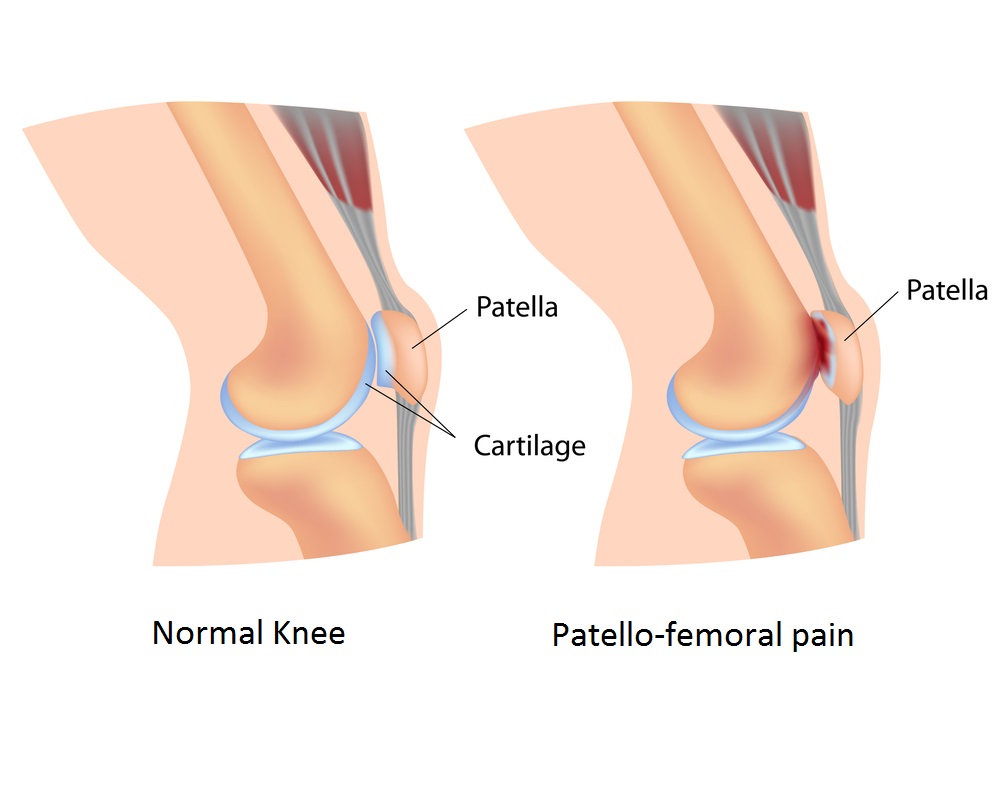 Knee Health
Knee Health
There can be many different causes of knee pain because knees consist of many intricate parts that can be injured or that can get inflamed because of different reasons. But probably the most common causes of painful knees is something called Patellofemoral pain syndrome.
Patellofemoral pain syndrome or PFS for short manifests as pain in your knees and more specifically in the front of your knees when you are sitting down or doing any other activity that involves to bend your knees. This pain can range from barely there to severe and additionally to pain you can also experience buckling of your knees or moments when suddenly your knee is not able to support your weight anymore and popping or catching of your knee that creates unpleasant sensations in your knee area. PFS usually occurs because the back of your kneecap also called patella is touching your thigh bone or femur.
But what causes for this contact to happen? Most frequently PFS is caused by overuse of the knees, because you have injured your knees and they don’t align properly or because excess wight is put on your knees that causes changes under the kneecap. And that is why Patellofemoral pain syndrome is common among teenagers especially those who play sports, manual laborers who have to perform similar tasks over and over again as well as athletes who put a lot of stress on their knees.
If you think you might have PFS you should visit your doctor even if the pain or other symptoms aren’t that bad because the faster the PFS will be diagnosed the quicker you will be able to treat it and back on your feet so to say. To diagnose PFS your doctor usually will conduct a physical exam as well as sometimes X-ray or MRI is ordered to confirm that it indeed is PFS and nothing more serious. After Patellofemoral pain syndrome is diagnosed you can start treatment of this syndrome.
Because this conditions isn’t as serious as for example fractures the treatment usually don’t involve surgery however sometimes in more severe cases surgery might be on the table. The first thing that your doctor will order you to do is to avoid certain activities that can worsen the condition of your knees. These activities include having your knees in bent position for long periods of time and avoiding exercise that includes you to bend your knees because this change will allow your knees to heal and the PFS to get better. Another common remedy for this syndrome is also the RICE method in which you Rest your knee by not putting weight on your sick knee, Ice it several times a day at least 20 minutes each time, Compress the knee with elastic bandage to prevent swelling and Elevate your leg as much as you can to rest the knee and to promote faster healing. Also doctors often prescribe some anti-inflammatory and pain medication so you can reduce swelling and deal with the pain a little easier as well as physical therapy exercises so you can exercise your knee without hurting it further. And if these methods don’t help and after 6 to 12 months of treatment you still experience severe pain and swelling only then surgical treatment like arthroscopy, debridement, lateral release or tibial tubercle transfer surgery is recommended.
But to prevent this syndrome from developing all together there are certain things you can do. First you can simply strengthen your knees by regularly exercising and incorporating specific knee strengthening exercises in your routine. And secondly you can be aware of the effect different activities have on your knees and limit those activities that cause you pain or discomfort in your knees so not hurting your knees further and not developing more severe form of Patellofemoral pain syndrome.

